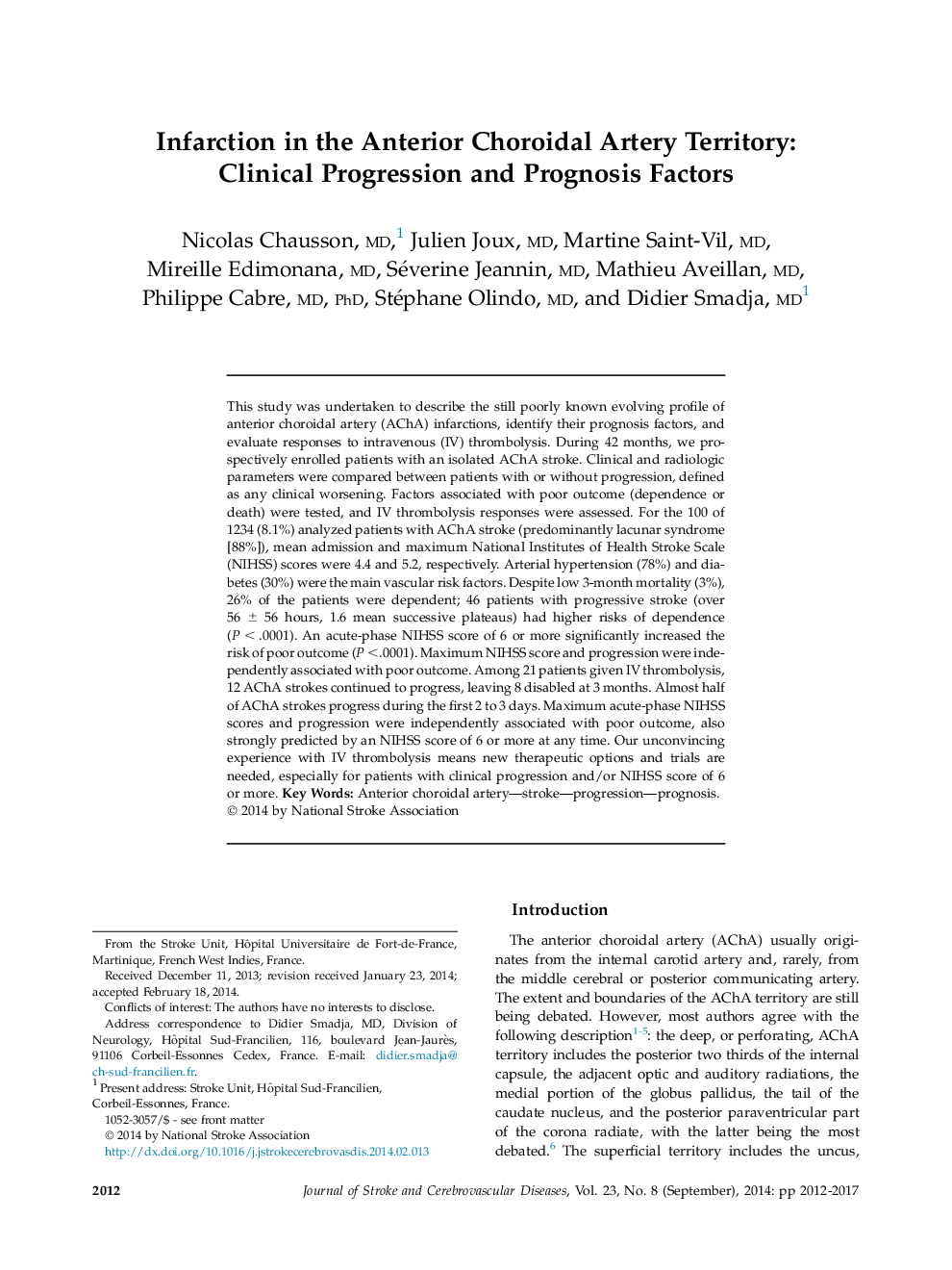| Article ID | Journal | Published Year | Pages | File Type |
|---|---|---|---|---|
| 2705989 | Journal of Stroke and Cerebrovascular Diseases | 2017 | 6 Pages |
This study was undertaken to describe the still poorly known evolving profile of anterior choroidal artery (AChA) infarctions, identify their prognosis factors, and evaluate responses to intravenous (IV) thrombolysis. During 42 months, we prospectively enrolled patients with an isolated AChA stroke. Clinical and radiologic parameters were compared between patients with or without progression, defined as any clinical worsening. Factors associated with poor outcome (dependence or death) were tested, and IV thrombolysis responses were assessed. For the 100 of 1234 (8.1%) analyzed patients with AChA stroke (predominantly lacunar syndrome [88%]), mean admission and maximum National Institutes of Health Stroke Scale (NIHSS) scores were 4.4 and 5.2, respectively. Arterial hypertension (78%) and diabetes (30%) were the main vascular risk factors. Despite low 3-month mortality (3%), 26% of the patients were dependent; 46 patients with progressive stroke (over 56 ± 56 hours, 1.6 mean successive plateaus) had higher risks of dependence (P < .0001). An acute-phase NIHSS score of 6 or more significantly increased the risk of poor outcome (P < .0001). Maximum NIHSS score and progression were independently associated with poor outcome. Among 21 patients given IV thrombolysis, 12 AChA strokes continued to progress, leaving 8 disabled at 3 months. Almost half of AChA strokes progress during the first 2 to 3 days. Maximum acute-phase NIHSS scores and progression were independently associated with poor outcome, also strongly predicted by an NIHSS score of 6 or more at any time. Our unconvincing experience with IV thrombolysis means new therapeutic options and trials are needed, especially for patients with clinical progression and/or NIHSS score of 6 or more.
